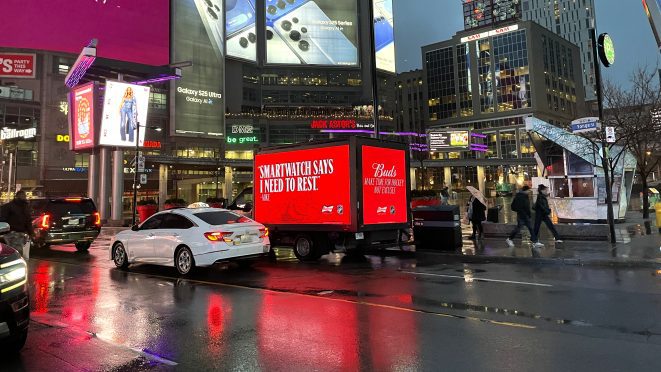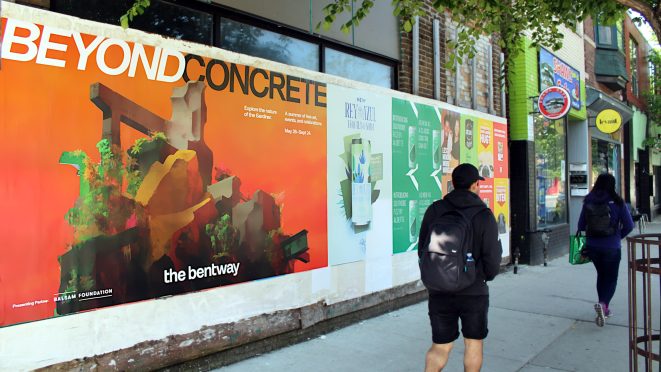Summary: This guide examines real-world factors determining wheatpaste advertising campaign longevity, from weather conditions and surface selection to installation quality and municipal enforcement. It covers seasonal variations, material choices, and professional techniques that extend campaign life while maximizing return on investment. The article provides practical insights for marketers planning outdoor advertising campaigns, emphasizing realistic expectations and strategic planning over optimistic assumptions.
Street-level marketing continues to evolve. Brands hunt for authentic ways to connect with urban audiences. Traditional methods? They’re losing their punch. Enter wheatpaste advertising, a technique that’s both old-school and cutting-edge.
But here’s the million-dollar question: How long will your wheatpaste campaign actually survive out there?
Weather beats down on it. City workers scrape it off. Rain soaks through it. Yet somehow, these campaigns keep delivering results. The trick lies in understanding what makes some installations last weeks while others disappear overnight.
Smart marketers need real answers about durability. Not vague promises or wishful thinking. Campaign budgets depend on knowing whether your investment will stick around long enough to make an impact.
The Basics of Wheatpaste Campaigns
Wheatpaste isn’t new. Artists have been slapping posters on walls for decades. What’s changed? The sophistication behind it.
The magic happens in that sweet spot where your message feels organic to the environment. Pedestrians don’t see another ad interrupting their day. They discover something that belongs in that space, that moment.
Think about it differently than billboard advertising. Billboards scream for attention. Wheatpaste whispers, then makes people lean in closer.
Each installation becomes a mini art piece. Some folks snap photos. Others share on social media. Your campaign spreads beyond the physical poster. That’s where real value lives.
But none of this matters if your poster peels off after two days of rain.
Weather: Your Campaign’s Biggest Enemy
Rain destroys everything. Period.
Except when it doesn’t. Good installations survive downpours that would kill amateur attempts. The difference? Understanding how moisture actually attacks your poster.
Water doesn’t just make things soggy. It works systematically. First, edges start lifting. Then corners peel back. Finally, the whole thing slides down the wall like a defeated flag.
Temperature swings create their own problems. Hot days make adhesive soft and unreliable. Cold snaps turn everything brittle. Your poster expands and contracts until something gives way.
Wind seems harmless compared to rain. Wrong again. Constant air pressure finds every weak spot. That tiny lifted corner becomes a sail. Before you know it, half your poster is flapping in the breeze.
Sun damage happens slowly, then suddenly. UV rays break down inks and papers over weeks. Your brilliant colors fade to pastels. Sharp text becomes fuzzy. Professional campaigns plan for this inevitable decline.
Humidity creates the worst problems because you can’t see it coming. No clouds, no obvious threat. But moisture in the air slowly undermines adhesion. Your poster might look fine until someone brushes against it and the whole thing comes loose.
Each microclimate tells its own story. That sheltered alcove might protect from rain but trap humidity. The sunny south wall dries quickly but bleaches colors. Urban canyons create wind tunnels that test even perfect installations.
Surfaces Matter More Than You Think
Not all walls are created equal. That obvious statement hides complex truths about adhesion, durability, and campaign success.
Smooth painted concrete? Paradise for wheatpaste campaigns. Clean, flat surfaces give adhesive maximum contact area. No texture to create weak points. No porosity to wick moisture where you don’t want it.
Brick walls tell a different story. All that texture looks appealing – more surface area should mean better adhesion, right? Sometimes. But mortar joints create stress concentration points. Weather attacks these joints first. Pretty soon your poster looks like a jigsaw puzzle with missing pieces.
Metal surfaces present interesting challenges. Great adhesion potential, terrible thermal stability. Your poster might stick beautifully overnight, then fail during the first hot afternoon. Metal expands and contracts more than other materials. Adhesive can’t always keep up.
Painted surfaces vary wildly in their poster-friendliness. Fresh paint often contains compounds that interfere with bonding. Old paint might be so weathered that you’re really sticking to dirt and oxidation rather than the surface itself.
Glossy finishes look smooth but can be slippery for adhesive. Matte finishes provide better mechanical bonding but may absorb moisture that weakens the paste over time.
Building age impacts everything. Newer construction often has cleaner, more consistent surfaces. Older buildings develop character – which usually means irregularities that complicate installation and reduce longevity.
The Hidden Science Behind Paste Formulations
Most marketers never think about what actually holds their campaigns to the wall. Big mistake. Paste formulation represents the invisible foundation that makes or breaks every wheatpaste campaign.
Traditional wheat flour and water sounds simple enough. Mix, apply, done. Reality proves far more complex. Flour protein content affects bonding strength. Water quality changes everything about consistency and curing. Temperature during mixing alters final performance characteristics.
Professional paste recipes include additives that sound like chemistry class. Methylcellulose improves working time and reduces dripping. Glycerin adds flexibility to prevent cracking. Salt controls bacterial growth during storage. Each ingredient serves specific purposes that become obvious only when you skip them.
pH levels matter more than most people realize. Slightly alkaline mixtures bond better to concrete surfaces. Neutral pH works best with metal substrates. Acidic formulations can actually damage certain surface materials over time.
Mixing sequence affects final paste performance significantly. Adding water to flour creates lumps that never fully dissolve. Flour into water produces smoother, more consistent results. Mixing speed influences texture and working properties. Professional teams follow precise protocols developed through years of trial and error.
Storage conditions change paste characteristics rapidly. Fresh paste bonds differently than day-old mixtures. Temperature during storage affects consistency. Exposure to air creates skin formation that compromises application quality.
Some teams experiment with non-traditional base materials. Rice flour offers different adhesion properties. Corn starch provides unique texture characteristics. Specialty wheat varieties produce stronger or more flexible bonds depending on protein structure.
Consistency testing happens before every major installation. Professional teams maintain standards using simple tools – watching how paste flows off brushes, timing drip rates, measuring working viscosity. These tests catch problems before they reach the wall.
Weather-specific formulations optimize performance under different conditions. High-humidity recipes resist moisture absorption. Cold-weather formulations remain workable at lower temperatures. Hot-weather versions maintain consistency despite heat exposure.
The interaction between paste chemistry and paper materials creates another layer of complexity. Some papers absorb paste differently than others. Coated papers may require adjusted formulations for optimal penetration. Ink chemistry can interact with paste ingredients in unexpected ways.
The 48-Hour Rule: Why Your First Two Days Determine Everything
Campaign survival often gets decided within the first 48 hours after installation. This critical window determines whether your wheatpaste advertising will last days or months. Understanding what happens during this period separates successful campaigns from expensive failures.
Adhesive chemistry doesn’t stop when installation finishes. Bonding continues for hours as moisture evaporates and chemical cross-linking occurs. Interrupting this process during the vulnerable early stage usually means campaign failure regardless of perfect conditions afterward.
Weather during those first two days matters exponentially more than conditions weeks later. Rain within 12 hours of installation destroys campaigns that would otherwise survive similar storms after proper curing. Temperature stability during initial bonding affects long-term adhesion more than extreme conditions faced later.
Edge lifting starts early or not at all. Corners that stay down through the first night usually remain secured for the campaign’s lifetime. Edges that begin lifting within hours will continue failing regardless of subsequent favorable conditions. Professional teams inspect installations after 24 hours to predict long-term performance.
Surface contamination reveals itself quickly. Oils, residues, or unstable paint that seemed manageable during installation often cause rapid failure once adhesive curing begins. These problems show up as localized lifting or bubbling within the first day.
Mechanical stress testing happens naturally during early exposure. Wind, vibration, and thermal cycling during the first 48 hours identify weak spots in installation technique or material selection. Installations that survive this natural stress testing typically achieve their full lifespan potential.
Community reaction crystallizes rapidly. Positive responses during the first days often translate to extended tolerance. Negative reactions usually prompt quick removal regardless of technical quality. First impressions matter enormously in determining community acceptance.
Property owner discovery timing influences campaign fate significantly. Owners who find installations immediately after application often remove them while paste is still soft and removal is easy. Owners who discover fully cured installations face more difficult removal and may choose tolerance instead.
Initial documentation quality affects long-term campaign management. Photographing installations immediately after completion provides baseline condition references. Comparing subsequent condition photos to baseline documentation helps identify degradation patterns and maintenance opportunities.
The psychological momentum established during early survival influences all subsequent decision-making. Campaigns that obviously weather their first challenges create impressions of permanence and legitimacy that extend tolerance periods.
Enforcement response patterns often depend on timing relative to installation. Complaints made while paste is still wet get immediate attention. Complaints about fully established installations may receive lower priority, especially if visual quality is high.
Professional teams use the 48-hour window strategically. Installation timing considers weather forecasts, community activity patterns, and property management schedules. Getting through this critical period successfully requires planning that starts before paste hits the wall.
Failure analysis reveals that most unsuccessful campaigns fail within this initial window due to preventable factors. Weather timing, surface preparation, or material selection problems become obvious quickly. Learning from early failures prevents repeating expensive mistakes.
Quality control during the 48-hour window allows for intervention while options still exist. Edge resealing, corner reinforcement, or protective measures can save campaigns if applied quickly enough. Waiting longer usually means accepting whatever performance emerges.
Installation Separates Pros from Amateurs
Anyone can slap paste on paper and stick it to a wall. Not everyone can make it last.
Surface prep takes time but pays dividends. Cleaning removes the obvious dirt and grease. But professional preparation goes deeper. Testing adhesion. Checking for loose paint or unstable surface materials. Identifying potential problem areas before they become real problems.
Paste consistency? It’s both art and science. Too thin and you get poor bonding. Too thick and application becomes messy, uneven. The right consistency depends on temperature, humidity, surface texture, and about a dozen other variables.
Application technique matters enormously. Working from center outward eliminates air bubbles. Proper pressure ensures good contact without damaging paper. Edge treatment prevents the lifting that kills most campaigns prematurely.
Timing the installation requires reading weather like a farmer. You need enough dry time for initial cure but not so much that adhesive skins over before bonding properly. Professional teams watch forecasts and adjust schedules accordingly.
Tool selection might seem trivial. It isn’t. The right brushes, squeegees, and smoothing tools can mean the difference between installations that last days versus weeks. Cheap tools leave marks, create weak spots, or damage materials during application.
Quality control happens during installation, not after. Fixing problems while paste is still workable saves campaigns. Waiting until everything’s dry means starting over.
Materials: You Get What You Pay For
Paper weight affects everything downstream. Light papers tear during installation. Heavy papers may need adjusted adhesive formulations. Finding the sweet spot requires experience with different material combinations.
Ink selection impacts both initial appearance and long-term viability. Standard inks fade quickly under UV exposure. Water-resistant formulations prevent rain damage but cost more upfront. UV-stable inks maintain color longer but may have limited color gamut.
Paper coatings create trade-offs between weather resistance and adhesion. Coated papers resist moisture better but may not bond as strongly. Uncoated papers stick well but absorb water readily. Professional teams test combinations to optimize performance for specific conditions.
Print quality affects durability beyond just appearance. Properly saturated inks resist fading longer. Good coverage prevents moisture penetration. Clean edges reduce failure points.
Design choices influence longevity in subtle ways. High-contrast designs show damage more readily than textured or busy layouts. Solid backgrounds reveal every scratch and scrape. Clever design can mask normal wear and extend perceived campaign life.
Seasonal Patterns Every Marketer Should Know
Spring brings hope and rain in equal measure. Frequent showers test every installation. But successful spring campaigns can transition into favorable summer conditions and achieve excellent total longevity.
Summer offers the best conditions for extended campaigns. Warm temperatures help adhesive cure properly. Low humidity reduces moisture-related failures. Long dry periods let installations reach their full potential.
Fall creates uncertainty. Early autumn may extend summer-like conditions for weeks. Late fall brings temperature drops and increased precipitation that challenge even good installations. Campaign planning requires flexibility and good weather monitoring.
Winter is tough on everything outdoors. Freeze-thaw cycles stress adhesive bonds. Snow and ice create moisture problems. Cold temperatures make materials brittle. Yet winter campaigns face less competition and can create memorable impressions when others avoid the medium.
Regional variations matter enormously. Coastal areas deal with salt air and high humidity year-round. Desert climates offer dry conditions but intense UV exposure. Northern cities face extended winter challenges. Successful campaigners understand their local climate patterns and plan accordingly.
Legal and Enforcement Realities
Municipal regulations vary dramatically between cities, neighborhoods, and even specific streets. What’s tolerated in arts districts gets swift removal in business zones. Understanding local enforcement patterns helps set realistic campaign duration expectations.
Property owners range from hostile to welcoming. Some remove anything they find within hours. Others appreciate well-executed campaigns that enhance their building’s character. Reading property owner attitudes correctly can add weeks to campaign life.
Enforcement often follows predictable cycles based on staffing, priorities, and complaint patterns. Monday morning cleanup crews tackle weekend accumulation. Pre-event cleanups happen before major civic activities. Understanding these patterns helps optimize installation timing.
Community reaction influences enforcement priorities significantly. Campaigns that generate positive buzz may get extended tolerance. Those creating negative feedback face accelerated removal. Successful campaigns read community sentiment and adjust accordingly.
Building relationships with local stakeholders – property owners, community groups, local officials – can dramatically impact campaign longevity. These relationships take time to develop but pay dividends across multiple campaigns.
Maximizing Every Day Your Campaign Survives
Strategic timing leverages favorable weather windows and avoids known problem periods. This might mean delaying campaigns during predicted storms or accelerating installation to catch favorable conditions.
Location diversification spreads risk across multiple sites with different characteristics. Some locations may face early removal while others exceed longevity expectations. Portfolio approach reduces overall campaign risk.
Staging installations across time maintains campaign presence longer than single-point installation. Rolling installations can extend effective campaign duration significantly while allowing for adjustments based on early performance data.
Monitoring and maintenance can extend individual installation life substantially. Early intervention for lifting corners or minor damage prevents total campaign failure. This requires dedicated attention but pays off in extended exposure.
Documentation supports both current campaign management and future planning. Recording installation conditions, weather exposure, and failure modes builds institutional knowledge for better future campaigns.
Professional Standards Make the Difference
Site assessment determines campaign feasibility and optimal techniques before committing resources. Professional assessment considers surface conditions, weather exposure, enforcement risk, and audience visibility in integrated evaluation.
Material testing prevents costly failures. Experienced teams maintain libraries of proven material combinations for different conditions. This testing investment pays dividends in campaign reliability.
Installation protocols ensure consistent quality across multiple sites and installers. Standardized procedures reduce variability and improve overall campaign performance. Training and quality control maintain these standards.
Removal responsibility demonstrates professionalism and supports long-term medium viability. Teams that clean up after campaigns maintain better relationships with property owners and municipal authorities.
Return on Investment Realities
Cost-per-impression calculations must account for realistic longevity under actual field conditions. Overly optimistic duration estimates lead to disappointing ROI analysis and poor campaign planning.
Campaign value extends beyond simple duration through audience engagement quality and secondary exposure amplification. Wheatpaste campaigns often generate social sharing and word-of-mouth that multiply effective reach.
Comparative analysis against other outdoor media should consider unique strengths of wheatpaste campaigns including authenticity, cultural relevance, and audience engagement quality rather than focusing solely on guaranteed exposure periods.
Budget allocation requires balancing upfront material and installation costs against expected campaign duration and impact. Higher-quality materials and professional installation cost more initially but often deliver better value through extended campaign life.
What Realistic Expectations Look Like
Duration ranges from days to months depending on numerous interacting factors. Professional planning sets expectations based on specific campaign conditions rather than general rules.
Environmental factors create the framework within which all other considerations operate. The best materials and installation can’t overcome truly hostile environmental conditions, while favorable conditions can make modest installations perform surprisingly well.
Quality installation and materials significantly impact campaign success probability but can’t guarantee specific outcomes. Professional execution improves odds rather than eliminating risk.
Strategic planning optimizes campaign performance within realistic constraints rather than attempting to overcome fundamental limitations of the medium.
Moving Forward with Confidence
Wheatpaste advertising delivers unique value when executed with a proper understanding of durability factors and realistic expectations. Success comes from matching campaign techniques to specific conditions rather than applying generic approaches.
Professional expertise in material selection, installation techniques, timing, and location assessment significantly improves campaign outcomes. This expertise develops through experience and ongoing learning rather than theoretical knowledge alone.
Campaign planning that incorporates realistic longevity expectations, environmental factors, and local conditions delivers better results than planning based on best-case scenarios or overly optimistic assumptions.
Grassroots Advertising has spent four decades perfecting wheatpaste campaign execution in Toronto’s challenging urban environment. Our team understands how local weather patterns, enforcement practices, and urban conditions impact campaign longevity. We’ve learned which materials work best in which conditions, how to time installations for maximum life, and where to place campaigns for optimal durability and impact.
Experience teaches lessons that theory can’t. Every successful campaign builds knowledge that improves future projects. Every failure provides insights that prevent similar problems down the road. Over 40 years, we’ve accumulated this knowledge and refined our techniques to deliver consistently reliable results for our clients.
Ready to launch a wheatpaste campaign that maximizes both impact and longevity? Contact Grassroots Advertising to discuss your project. We’ll help you navigate the complexities of outdoor campaign planning and execution to deliver real results for your marketing investment. Let’s make your message stick, literally and figuratively.







